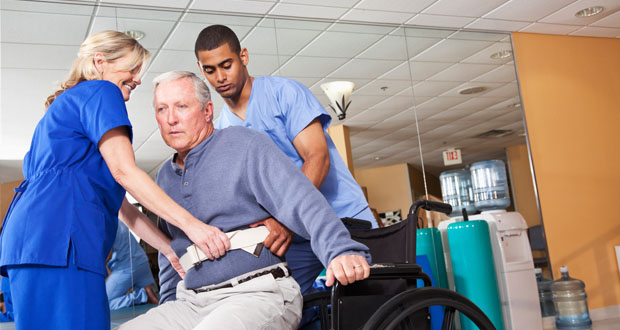Studies show that an average nurse lifts 1.8 tonnes per 12-hour shift, re-positions patients around 69 times a shift and often perform 4 transfers per day. That is a lot of lifting, pushing and pulling and can leave nurses battered and bruised.
According to Kathy Whittington from medical systems manufacturer SPAN America, in nursing, 40kg is classed as a light lifting load.
However, in other industries OHS standards say anything over 20kg is a hazardous load.
Add all of this together and Whittington is troubled. She isn’t worried for nurses now, but constant lifting and straining can leave many nurses with RPIs and back problems in later life.
Whittington told the crowd at the recent nursing expo at Australian Healthcare week that the US nursing guidelines advocate no lifting at all. She believes that nurses need to change the culture that expects them to lift and strain themselves. This starts at universities and ends on the wards.
Whittington told the crowd that nurses need to take advantage of new technology that surrounds them. Articulating beds, lifts and slings make for safer patient handling and mobility.
Avoiding lifting and logrolling also removes the likelihood of a patient falling as a result of the lift and any resultant injuries that may occur.
Some in the crowd took umbrage with the suggestion that universities don’t teach safe handling. However, it was pointed out that many nurses in the workforce learnt their trade in pre-OHS days.
One nurse in attendance, Laura Caponetto, told Nursing Review that she is constantly lifting and has suffered as a result.
“I used to work in orthopaedics, so lots of lifting there,” she said.
“I actually tore a muscle in my shoulder when I first started. Clients these days are getting bigger and with the ageing population people are relying on others to help them mobilise and transfer.
“Many of them are incontinent so you are moving them more frequently to change them.”
Caponetto agreed with Whittington on teaching and culture changes.
“When I was doing my degree, all those machines and things weren’t really talked about. Yes, there was a no lifting policy, but the reality when we went on placement was that machines are barely used.
“It was all nurses lifting clients, or in pairs… and when we are short staffed with a big patient load and time constraints, it’s quicker to just push and pull as opposed to just grabbing a hoist or a lift,” she said.
Whittington told the crowd to leave her talk with these ideas in mind: work smarter not harder, use the equipment available and use technology to make the job easier.
Do you have an idea for a story?Email [email protected]
 Nursing Review The latest in heathcare news for nurses
Nursing Review The latest in heathcare news for nurses

